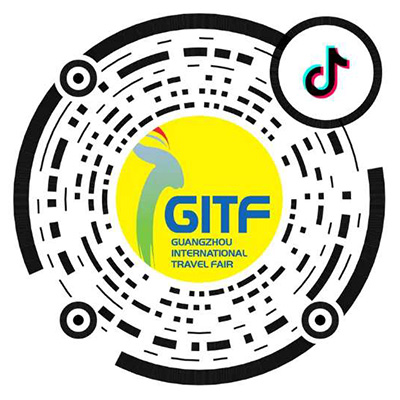
Forum Review丨One museum for every 200,000 people! How to keep cultural relics alive?
2025-06-24
When the museum has become a necessity of people's lives, through the museum in the collection of cultural relics continue to “live”, in order to enjoy the way to present the charm of its precipitation of the years, in order to attract more people into the museum, the achievement of a beautiful cycle of museums and tourists to run in both directions.
The latest data released by the State Administration of Cultural Heritage shows that by the end of 2024, the total number of museums on record nationwide reached 7,046, an increase of 213 from the previous year, realizing that every 200,000 people own a museum, and the free opening rate of museums reached 91.46%. The museums around us are being endowed with a brand new mission - to collide with more new ideas through non-heritage, art, culture and technology, interaction, popularization of science and other forms of interaction. At the 33rd International Tourism Exhibition, the fourth “Let Cultural Relics Come Alive LIVE” sharing meeting continued to meet with people who love museums once a year to discuss the themes of museums, tourism and cultural creation. From this curator, experts gathered at the sharing meeting, we can feel that the museum is more open-minded and innovative thinking to seek new changes, the museum is also promoting the power of more cultural confidence.
01
Carrying on the mission of civilization
Communication is vital
“Museums are all around.” This is the true feeling of many people today. Museums are touching the pulse of civilization, showing the gathering place of cultural confidence, its daily implementation of a series of colorful cultural activities for the people's spiritual world to provide a richer nourishment. In the view of Li Lisong, director of the Dongguan Museum, today's talk about museums live, cultural relics live, a lot of it is biased in favor of the concept of culture and innovation: “I don't think it's like that.” He believes that the core of the museum is the history of its existence, cultural relics, civilization and the era of the existence of history tracing the spirit, that is, what the ancestors left behind for the spirit of maximizing the dissemination of the story to the world to listen to the story of the city, tell the story of the country, tell the story of the ethnic groups, which is the museum's own value: "I understand that the museum has a greater civilization bearing capacity and the capacity of civilization dissemination, which is the essence of museums."
Director Li believes that all the museum is to do communication, this communication does not mean the media communication, but to tell the cultural story: "the museum's ‘people-centered’, not the museum people, but the interpretation of cultural relics of the right to interact with the community, and come together to do civilization and cultural Interpretation." He cited an example, in the “Ancient Dongguan” basic display on the basis of the Dongguan Museum to join the “read the city - a glance at the millennium” exhibition, with the children's perspective to the Dongguan Museum of cultural relics, including the positive phase of the tower, the Yuan Dynasty bronze bells, monuments, etc., live, very vivid, and the introduction of exhibition-related manuals, quizzes, and other information to the public. Launched the exhibition-related manuals, answer cards, study materials and emoticons, particularly popular on the Internet, and later attracted many people to card, so that the exhibition is located in the 1.2-meter-wide corridor, but also become a studio of children's photography card point.
A long time ago, there has been a misconception that IP creation in museums is all about culture. But when the demand changes, the museum's IP creation has also been introduced into the market thinking, that is, IP thinking. Director Li said that in the IP aspect of the introduction of the Forbidden City IP, and the Shenyang Imperial Palace to display the top 100 pieces of porcelain in cooperation, the exhibition of the Great Tang Treasure of the Famen Temple, the Sanxingdui 3D printing and other exhibitions, the effect is very good. In terms of exhibition layout, in addition to the star cultural relics card, but also set up a key card scene, so that the public will make the exhibition spread to the extreme: “Each exhibition can do explosive, is that we make full use of the public's psychology, to give him the maximum cultural consumption and cultural enjoyment.” Therefore, he believes that storytelling is not the cultural relics themselves, it is through the image packaging to tell the story.
As to how to expand the communication power of museums, Zhu Xiaoqiu, deputy director of the Guangzhou Museum, the host of the sharing session, said that the museum community is also reflecting and thinking about “what is the biggest product of cultural creativity”? She believes that it is the exhibition: “The exhibition is our core and the biggest cultural and creative product.”
02
Introducing innovative IP
Cracking the bottleneck of museums out of the loop
In the country, there are a large number of museums, which is a good thing, but not necessarily for the museums themselves. After all, it's getting harder and harder to get out of the loop in a crowd of museums.
China Tourism Design Institute Chief Branding Officer, the State Administration of Cultural Heritage Cultural Exchange Center consultant Mr. Chen Zekai that the museum should seriously study the audience, such as now after 00, after 10 like to participate in the creative itself, they do not just play the role of the audience, and the essence of the museum is not to sell things, but in order to disseminate the culture of the greater influence. He introduced that over the years, China Tourism Design Institute has made a set of theories about the development of cultural and creative products, called “3C model of cultural and creative development”: "How to better develop and promote our cultural and creative exhibitions and cultural and creative products is the focus of our generation. How to better develop and promote our cultural and creative exhibitions and products is the focus of our generation." He said that the so-called 3Cs, the first C is Culture, the third C is Customer, and it is creativity that is the bridge, connecting the first and third Cs. He shared six models for the creation of cultural IP, whether it is a museum operator, or a company that wants to cooperate with the museum, can take this perspective to explore, how to create a good cultural tourism IP, cultural IP with the museum. in this, including the Forbidden City cat series as the representative of the secondary thinking, the British Museum's Egyptian cat as the representative of the hunt for the commercial culture of the Museum of IP, dolls-type IP As well as the star cultural relics type IP, conceptual symbols type of cultural and creative IP, as well as co-branding type of IP. He suggests that Guangdong, as a place of first try and first go in the whole of China, there are a lot of cultural relics, such as ceramics in Foshan, etc., which also represent China's once exported all over the world, and now there are IPs in Guangdong that have an influence on the children of China such as Ao Fei animation, which can be re-crossed with the cultural relics of Guangdong and can create more successful cases from it.
03
Reinventing Product Thinking
Creating Exhibitions that Visitors Will Pay for
The connotation of museums is profound and long, how to make these treasures more people see? Since then, the industry has been exploring this issue, but a good and popular exhibition is not the norm, so what kind of exhibition should the audience pay for? Under the auspices of Zhu Xiaoqiu, director of the roundtable forum, the curators and experts were invited to gather and express their views.
The director of Dongguan Museum, Li Lisong, believes that the first thing to do is to reshape the starting point: "If you take the museum exhibition as a piece of our work and career, it has absolutely no market value. If we treat the exhibition as a cultural product facing the market, it has a different starting point." He cited the smash-hit Nezha movie as a case study, saying that in the process of visiting the dumpling's directing team, he came to the realization that what museums need to learn from is this kind of top-notch movie, theater, and game thinking, which starts with good genes, i.e., there should be a cultural element, and is followed by top-notch product thinking: "All the good selling is not a fluke, but is to really make long-selling products, explosive products, with Quality comes first."
This year, the AI immersive project “Guangfu Menghualu” in Guangzhou Wuxianguan Nanyue Xianxian Hall has attracted a lot of attention. This exhibition is located in the Yuexiu District, important cultural relics and sites account for more than 70% of the city of Guangzhou, on the basis of rich resources, how to revitalize cultural relics? Guangzhou City, Yuexiu District, Deputy Director of the Bureau of Culture, Radio, Tourism and Sports, He Yuanfei introduced the background of the “Guangfu Menghualu”, through the digitization of cultural relics, with local cultural stories of cultural relics for the scenario and linkage, to give the audience a more realistic experience. Last year's hit Shanghai Museum “disappeared pharaohs” also gave the industry a great inspiration, that is, people are willing to pay for the novelty of the experience, and if the presentation is cultural and spiritual enjoyment, people are also willing to pay.
As a corporate museum, Guangzhou Metro Museum is different from traditional museums in that it is more like an experience hall. Wang Shaolei, general manager of marketing and IP management of Guangzhou Metro Resources Company, admitted that the metro museum is operated with metro IP, and the whole museum is more like a big IP, which can be loaded with a lot of small IPs, for example, YOYO Neighborhood is the IP of the cartoon character of the metro museum, and there are also a variety of spatial IPs or activity IPs, including the continuous live broadcasting of the “Metro Tour in Guangzhou”. There are also various spatial IPs or activity IPs, including the continuous live broadcast of “Touring Guangzhou on the Metro”, and various IPs eventually form an IP matrix, and then develop cultural creation from the perspective of IP management. She concluded that the core competitiveness of the museum is IP, quality control, channels and publicity, and storytelling ability, and when there is no restriction on the development of the front-end, the sales channels of the back-end have been opened, and the magnitude of the income from the cultural and creative industries can be expected to be greater.
For members are connoisseurs, collectors of antique trade associations, the power of cooperation is infinite. Antique Trade Association Secretary Kuang Yuming said that the Association established a special committee of non-state museums, hoping to be able to integrate the community's non-state museums now resources can be integrated, and work together to serve them, and work together to create a space that can be upgraded by everyone.
However, there are still many obstacles and hindrances for museums to do IP and cultural creation nowadays. Mr. Chen Zekai, Chief Branding Officer of China Tourism Design Institute and consultant of Cultural Exchange Center of State Administration of Cultural Heritage, believes that product thinking is crucial. He suggests that we can try to use three carriers to explore: "The first carrier is the exhibition, from the product thinking to innovate the exhibition mode; the second mode such as by extracting the expression of the cultural relics in the museum, so that its story can be empathized with a certain group of people in today's era, such as made into dolls in the streets and alleys to interact with the people, it is very likely to be able to catch fire, and it can lead to this cultural relics and even the whole museum artifact matrix."
In the roundtable session, Sun Xiaomin from Xinhua Group also introduced the cooperation with the New Culture Museum of Guangzhou and the latest progress of exhibitions, such as the Xinjiang and Tibet exhibitions, which will be done in a co-branding and joint way.
From this sharing session, it can be seen that industry players have in-depth thinking about how to break the circle of museums, how to create influential IP, how to let the audience buy and other topics. However, behind it, it is actually the core issue of breaking the circle of culture. In order to break the circle, it is necessary to have the right time, place and people, that is, to have a new precise thinking about the audience's preferences, and to transform the rich resources into experience with the help of a more vivid way, in order to make the breaking of the circle more powerful.
Address: Room 1510, West Tower, Poly Trade Center, No.1000 Xingang East Road, Haizhu District, Guangzhou, China










